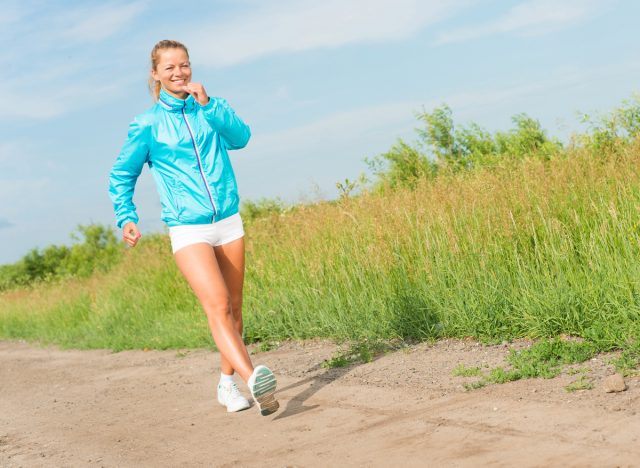Ways to Boost Your Walking Pace for Enhanced Caloric Burn
Walking is one of the easiest and most accessible forms of exercise, and it’s also surprisingly effective when it comes to burning calories. But if you want to spice up your walking routine, there’s one surefire way to do it: pick up the pace. That’s right; increasing your average walking speed can help you burn more calories and increase your fitness without adding extra time to your workout. Whether you’re walking around the neighborhood or taking a brisk walk on the treadmill, picking up the pace can make a big difference.
The beauty of walking faster is that it raises your heart rate, engages more muscles and increases your overall energy expenditure. You don’t have to sprint to see these benefits—a little extra effort can add up to significant gains. Plus, walking faster challenges your cardiovascular system and builds endurance, making it a great addition to your weight loss or exercise routine. It’s a low-intensity way to burn calories, especially if you don’t like high-intensity workouts.
- Advertisement -
As a coach, I have worked with many clients who needed to move outside of the gym to reach their weight loss goals. Walks are often the first step, and increasing their speed has changed the game.
In this article, I’ll share why walking faster helps you burn more calories, strategies to increase your speed, and some of the best walking workouts to maximize your results. I’ll also highlight common mistakes that can slow you down and how to fix them, to make sure you stay on track and on your way to a leaner, fitter body.
Why walking faster helps you burn more calories

The science behind going faster is simple: the faster you move, the more energy your body requires. Walking faster increases your heart rate, which increases your calorie burn. According toHarvard Health Publishinga 155-pound person walking at a speed of 3.5 miles per hour burns about 266 calories per hour. Increase that pace to 4 miles per hour, and the calorie burn jumps to about 350 calories per hour. It’s a significant difference just by quickening your stride.
Going faster also engages more muscle groups, especially your core, glutes and legs. When you move quickly, your muscles work harder to propel you forward, which requires more oxygen and energy. This process, known asaerobic metabolismhelps you burn more calories. In addition, brisk walking improves cardiovascular health by strengthening your heart and lungs, making it easier to maintain a higher intensity over time. The cumulative effect is a higher overall calorie burn, both during and after your workout, thanks to the “afterburn” effect of the elevated metabolism.
Proven strategies to increase your walking speed


If you want to increase your walking speed, it’s not just about pushing yourself harder. Proper technique and gradual progression are key. Start by improving your posture. Stand tall with shoulders back and core engaged. This alignment allows for a more efficient stride and prevents fatigue. Focus on taking shorter, faster steps instead of lengthening your stride. This helps maintain your balance and reduces the risk of injury, allowing you to increase your pace more efficiently.
Another strategy is to incorporate interval training into your walks. Alternate between periods of fast walking and slower recovery walking. For example, walk fast for two minutes and then slow down for one minute. Repeat this cycle throughout your walk.
Interval training increases your average walking speed and increases your cardiovascular endurance, making it easier to maintain a faster pace over time. You can also challenge yourself with incline walking – whether on a treadmill or outdoor slopes – as this naturally increases the intensity of your walk and forces you to pick up the pace.
Best walking session to increase speed and burn calories


One of the best ways to increase your walking speed is by incorporating structured workouts designed to challenge your pace. A popular method is the pyramid workout, where you gradually increase your speed in intervals and then decrease it in a mirror pattern.
Start at a comfortable pace for two minutes, then increase the speed slightly for the next two minutes. Continue this pattern until you reach your maximum sustainable speed, then work your way down again. This workout not only improves speed but also builds endurance.
Another effective workout is the tempo walk. Start at a moderate pace for five minutes to warm up, then walk at your fastest sustainable pace for 20 to 30 minutes. Finish with a cool down period at a slower pace. Tempo walks train your body to maintain a higher speed for longer, which leads to more calories burned.
For a more intense challenge, incorporate walking sprints – short bursts of walking at maximum speed followed by recovery periods. These high-intensity intervals can dramatically increase calorie burn and improve walking speed.
Common mistakes that slow you down – and how to fix them


1. Exceeding
A common mistake that can sabotage your speed is overshooting – trying to take longer strides to go faster. Overshooting reduces your efficiency and can lead to strained joints and muscle imbalances. To fix this, focus on taking shorter, faster steps. Engage your glutes and core to propel yourself forward instead of relying on just your legs.
2. Neglecting your arm swing
Another mistake is neglecting your arm swing. Your arms are essential in helping you go faster by providing momentum. Make sure your elbows are bent at a 90-degree angle and swing your arms naturally as you walk. Avoid clenching your fist, which can create unnecessary tension.
3. Wearing the wrong shoes
Finally, pay attention to your shoes. Wearing shoes that don’t support your walking style or provide enough cushioning can slow you down and increase your risk of injury. Invest in a good pair of walking shoes that are light, flexible and comfortable to keep your pace up and your walks pain-free.

